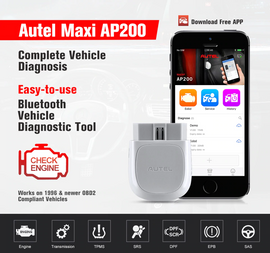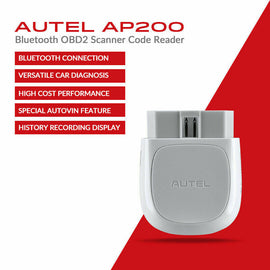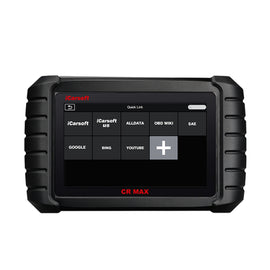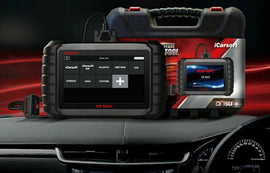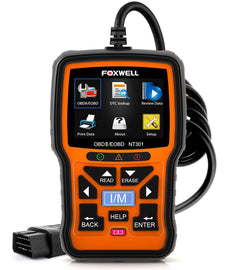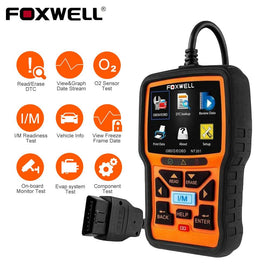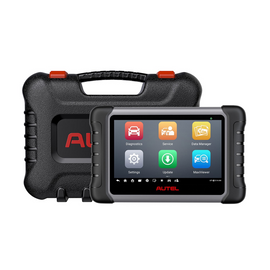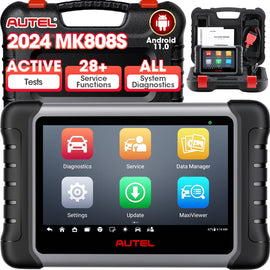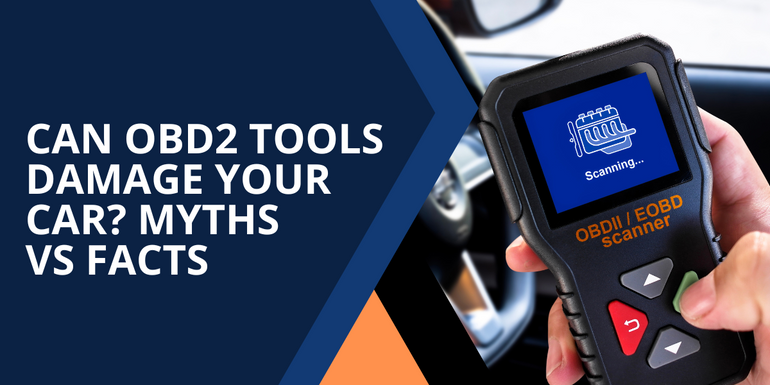As car technology changes, the ways to find potential faults in a car when the check engine light is on are changing too. Among these methods, there is an OBD2 tool to diagnose any automotive problems.
OBD2 tools are designed for modern cars too. It can monitor many issues and helps you make sure everything is working fine.
They enable real-time monitoring and troubleshooting of a vehicle's operational status.
But somehow, there are a few myths about the diagnostic scan tool for Australian cars and others. So, what’s true? Let’s find out.
Can OBD2 tools damage your vehicle?
Mainly, the answer is NO. A high-quality car diagnostic tool will never be a problem for your car.
Here is why:
-
Read-Only Functionality: Standard quality and best car diagnostic scan tools are designed to just gather the data. They do not have a capability to write, change, or modify with any of the vehicle's settings.
-
Compatible with Vehicle Standards: Certified OBD2 vehicle diagnostic tools are designed with the proper methods - considering safety for various car models. A high-quality scanner will not affect your car in any way.
However, not all OBD2 scanners are the same. Low-quality or uncertified gadgets can pose concerns, so choose a recognised, well-reviewed product.
When can an OBD2 scanner damage your car, or when is it safe?
Many OBD2 automotive diagnostic tool users require clarification. In case of no understanding of the tool, they might alter the settings and cause problems with the car's electronic system.
While scanners can reset error signs or alerts when a problem is resolved, this does not affect any basic software or mechanical settings in their car.
However, there are a few reasons when you might end up causing bigger troubles for your car.
Not sure what to do? Let us help you with a few things briefly:
Safe When:
-
You're using a reliable and high-quality OBD2 scanner.
-
You only read code or live data.
-
You use software or apps that have been suggested by the maker.
-
You are carefully following the tool's directions.
Risks Arise When:
-
You use a cheap or low-quality scanner that gives out wrong commands.
-
You change or reset system settings without a good understanding (e.g., airbag system, ECU, ABS).
-
You clear codes without solving any potential problems.
-
You perform complex coding or flashing without proper knowledge, which can corrupt the ECU.
Tips to Avoid Damage:
-
Unless you've had advanced feature training, stick to code reading and diagnostics.
-
Always verify tool compatibility with your unique vehicle make and model.
-
Avoid Bluetooth OBD2 programs from unknown developers; some deliver unreliable commands.
-
Never disconnect the scanner while the car is in the middle of diagnostics or reset.
Potential Risks of Using an OBD2 Scanner
OBD2 scanners are intended to be safe and non-intrusive, but, as with any instrument, if used incorrectly or with limited knowledge, they can cause problems.
Several factors contribute to the possible risks associated with the incorrect usage of OBD2 scanners.
-
Forced Resets and Reconfigurations:
When users without any experience try to use the tools to reset the warnings, they can also alter the car settings without fully understanding the issues.
-
Use of Low-Quality Scanners:
The deal of an inexpensive diagnostic tool is tempting. However, they can be a problem. These can fail to follow specific standards needed for the vehicle’s ECU communication.
-
Short Circuits:
Connecting a faulty scanner or one that is poorly designed can cause a short circuit in the vehicle's electrical system.
-
Voltage Fluctuations:
Don’t know how to connect? Get help. Otherwise, it can also be the reason for rapid voltage spikes or decreases, making the electronic system faulty.
What to Do if Issues Arise?
Follow these procedures if you notice any unusual behaviour in your vehicle after utilising an OBD2 scanner.
-
Consult Professional Help: Professional assistance should always be sought for complex diagnostic codes or severe concerns detected by a scanner.
-
Review Scanner Settings and History Logs: It is recommended that you verify your scanner settings and history logs on a regular basis to discover any accidental changes or alterations that may have occurred without your awareness.
Can you use an OBD2 scanner while the engine is running?
Yes, you can scan for fault codes and view live data while the engine is running. However, certain cars will not allow you to delete fault codes while the engine is running.
Conclusion
Using an OBD2 scanner for car owners is a smart way to stay ahead of potential issues and maintain your vehicle’s performance. While myths suggest that OBD2 tools can damage your car, the reality is that they are safe when used correctly.
Always choose a high-quality scanner and avoid making changes unless you're experienced. At Auto Lines Australia, we offer trusted, top-rated OBD2 diagnostic tools that are compatible with Australian vehicles and beyond.
Whether you're a DIY enthusiast or just want to stay informed, our scanners are a reliable companion for your car’s health. Drive smart—diagnose with confidence.

